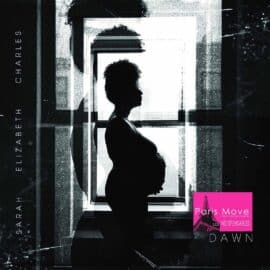| Jazz |

The Inner Pulse: Sarah Elizabeth Charles and the Art of Transformation
1. The Vision Beyond Style
Let us not dwell on matters of style. What Sarah Elizabeth Charles offers is not an exercise in musical taxonomy but an act of artistic purity, an endeavor that borrows freely from classical composition, pop lyricism, the daring of rock, and the improvisational spirit of jazz. Yet beyond all those references, her work stands as a poetic construction of rare density.
In her case, music follows vision. The voice becomes both vessel and mirror, a conduit through which thought, emotion, and rhythm converge. Much like Michael Mayo, Charles inhabits an artistic world where the inner landscape is far more compelling than external form.
It is no surprise that critics have been captivated by her singular presence:
“Sarah Elizabeth Charles possesses a vocal style of great depth, combining a powerful voice with subtle nuances… She is in perfect harmony with her band.” –Nate Chinen, The New York Times
“A genre unto herself… Sarah Elizabeth Charles has mastered her art, and she will likely remain so for a long time.” –Joe Tangari, DownBeat
“A flawless technical command that serves an audacious and unrestrained expression, one charged with cultural and political conviction: a rare and exhilarating combination that recalls Betty Carter and Abbey Lincoln, and, in recent years, the neo-soul fervor laced with jazz that defines Sarah Elizabeth Charles.” –Christopher Loudon, JazzTimes
These are not mere accolades, they are recognition of a voice that transcends category.
2. Dawn: The Alchemy of Sound and Experience
We are, in truth, within the realm of art in its most essential form. Her voice, radiant, familiar, and grounded in memory, evokes the pop divas of the late ’80s and ’90s, creating an immediate sense of recognition. That familiarity is no accident. The listener, encountering something both new and remembered, steps into a terrain of trust.
Dawn, her latest album, is both expansive and intimate, a meditation on birth, loss, joy, grief, hope, and transformation. Written over four years and recorded in 2024, while Charles was six months pregnant with her second child, Dawn was composed in real time. The act of creation became inseparable from life itself.
Through the process, Charles confronted the miscarriages that preceded her successful pregnancies, mourned loved ones lost, and celebrated the arrival of her two sons. The album, ten songs of exquisite craftsmanship, reveals the complexity of those experiences with remarkable clarity and grace.
There is nothing demonstrative in her delivery. Emotion arises not from vocal theatrics but from precision, from the care with which each word and note is chosen. Her beauty lies in the equilibrium she builds between rhythm, phrasing, and timbre. If one listens closely, the pulse of the record feels like a heartbeat, a rhythm of life itself. Beneath the surface, delicate arrangements weave quietly, like the invisible threads of breath that sustain the body.
3. Mother: The Politics of Recognition
If Dawn speaks in whispers, Mother, a piece Charles describes as “classic Sarah”, proclaims its truth aloud. The song stands as both declaration and reclamation: a call to visibility for those who give birth.
“I feel like ‘Mother’ is an affirmation,” she says. “There isn’t much acknowledgment of the sacrifice, of the contribution. We don’t really understand the engagement of body, mind, and soul.”
Her lyrics resonate as both personal confession and collective testimony: the real energy it takes to move through pregnancy, birth, and motherhood.
“In my experience,” she adds, “people don’t take the time to grasp what that really means, because it’s so common, so taken for granted. This song is a call to honor the complexity of that often invisible, underestimated labor.”
On Mother, the interplay between Charles’s voice and the luminous solos of Keren, Oh, and Harris elevates the track into something both radiant and celebratory. It’s not just an anthem of motherhood, it’s a manifesto on embodiment, on the unseen endurance of creation itself.
4. The Human Moment
These reflections speak to anyone who listens to Dawn. The music, the voice, the words—they could have taken the form of a book, just as Lulu on the Bridge became a filmic meditation on loss and love. Each artist chooses a medium: for the writer, a story; for Sarah Elizabeth Charles, a song. In both cases, beyond the human and poetic lies a vision of humanity itself, suspended in time and sound.
In the end, Dawn is not merely heard; it is felt, like a heartbeat reminding us that we are still becoming.
Thierry De Clemensat
Member at Jazz Journalists Association
USA correspondent for Paris-Move and ABS magazine
Editor in chief – Bayou Blue Radio, Bayou Blue News
PARIS-MOVE, November 10th 2025
Follow PARIS-MOVE on X
::::::::::::::::::::::::
Musicians :
Sarah Elizabeth Charles (vocals)
Maya Keren (additional vocals, piano, Rhodes, keyboards)
Linda May Han Oh (bass)
Savannah Harris (drums)
Skye Steele (violin)
Marika Hughes (cello)
Jarrett Cherner (string arrangements — tracks 3, 4, 6, 9)
Tracking List :
1. Rainbow J (3:18)
2. Ground (feat. Linda May Han Oh) (2:13)
3. Discovery (6:18)
4. Miracle (3:55)
5. Kick (6:28)
6. Plans (6:15)
7. Rainbow T (2:20)
8. Mother (5:40)
9. Angel Spark (4:44)
10. Questions (3:48)
Produced by Sarah Elizabeth Charles
Co-postproduction: John Davis
Music and lyrics by Sarah Elizabeth Charles
Recorded at The Bunker Studio, Brooklyn, NY (2024 & 2025)
Engineered by John Davis
Assistant Engineer: Annaliese Stickle
Track 10 Engineered by Aaron Nevezie
Mixed by John Davis
Mastered by Alex DeTurk
Dawn song cycle made possible by Chamber Music America’s New Jazz Works Grant

